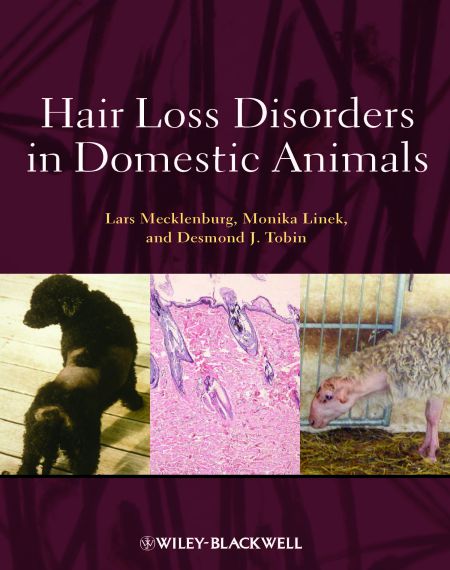Hair Loss Disorders in Domestic Animals is an in-depth reference on the pathomechanisms and clinical approaches of all skin diseases in domestic animals that have hair loss as the predominant clinical feature.
Hair Loss Disorders in Domestic Animals

It presents both basic and clinically-relevant knowledge on alopecic disease in animals. This text is a one-of-a-kind resource providing cutting-edge coverage of the physiology and pathology of hair follicles. Disease-specific chapters include: a detailed description of the disease entity, etiology, pathogenesis, clinical and histopathological diagnosis and treatment modalities.
With the loss of its relevance as a thermal regulator in mammalian survival, the psychosocial significance of hair for humans has continuously increased. There-fore, it is not surprising that domestic animals with alopecia are increasingly presented by their owners to veterinarians for treatment. As with physicians, the veterinary clinician is confronted with a difficult task, since the pathogenesis of alopecia can be very complex and therapeutic possibilities very limited. The aim of this book is to help with the understanding and diagnosis of alopecia and to demonstrate what therapeutic options are available to both the veterinarian and client. As the diagnosis of alopecia frequently relies on a histopathological evaluation of the hair-bearing skin, this book is aimed not solely at practicing veterinarians, but also veterinary pathologists who work with skin biopsies from alopecic patients.
Above all, the diagnosis and treatment of alopecia should be grounded on a thorough understanding of hair follicle anatomy and physiology, and particularly on how this may differ between species. To this end, our book begins with a detailed introduction into the basics of hair follicle biology. Moreover, it provides an insight into the variety of spontaneous alopecic dis-eases in domestic animals. This will hopefully stimulate new thinking on the etiology and pathogenesis of alopecia, and aid researchers in their search and development of new therapeutics for alopecia.
| PDF Size: 17 MB | Book Download Free |
Password: pdflibrary.net
